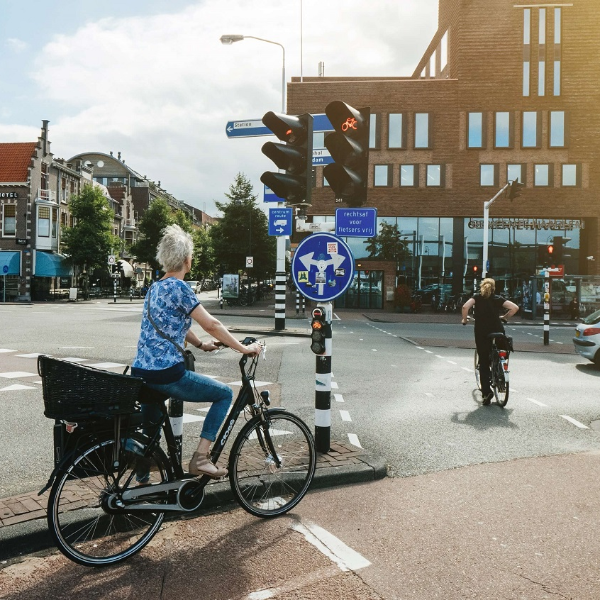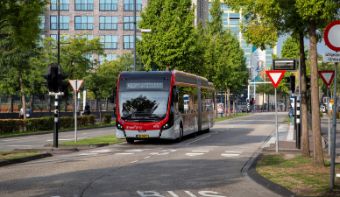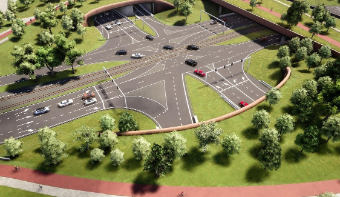Mobility
Smart, sustainable, healthy

Mobility
Mobility plays a crucial role in today’s world and offers many benefits to society. It enables people to get around easily, giving them access to work, education, healthcare and other important services. It also aids economic growth by stimulating trade and tourism. Sustainable mobility also contributes to improving air quality and reducing the greenhouse gas emissions that contribute to climate change. Finally, mobility promotes social contact by creating more places for people to meet and improving accessibility for a diverse range of communities. In short, mobility is essential to modern society and can contribute to a better quality of life for us all.
The way we look at mobility from a social and technical perspective has changed. Today's mobility solutions are all about accessibility, health, CO2 emission reduction and quality of the living environment. We help make cities, districts, villages and business parks accessible in a multimodal manner by developing appropriate and innovative mobility concepts. People want to be able to think along and help shape and determine their own living environment. To this end, we work intensively together with all stakeholders involved, from residents to policymakers, to achieve optimal solutions that are supported by these stakeholders.
Liveable and accessible
Our field of expertise includes conducting accessibility studies, exploratory studies, planning studies, route analyses (high-quality public transport, rail and road transport) as well as working out traffic engineering and mobility solutions. This includes smart mobility and MaaS (shared mobility) at the urban, regional as well as national levels. Designing based on the human dimension is key in this process.
In densely populated areas, public spaces should be redesigned to best facilitate sustainable mobility. We analyse the effects of policy and design choices and integrate them with social and environmental impacts. Unique is our spatial analysis for realising cycling infrastructure. We use smart measurement techniques to collect traffic data, provide access to public data and use powerful simulation models for integrated consideration of liveability and accessibility.
Bicycle and pedestrian infrastructure
Developing and promoting pedestrian and bicycle-friendly infrastructure, especially in urbanised areas, is an ideal way to reduce carbon emissions, encourage physical activity and improve the quality of the living environment.
Witteveen+Bos has the necessary experience in the field of bicycle infrastructure. Unique is our spatial analysis in which we determine how cycle paths and crossings can be realised in a densely built-up environment. We put this knowledge into practice worldwide, including in densely populated urban areas in Asia, such as Singapore, with, for example, the deployment of our Bike Path Planner.
Bicycle Traffic Monitor
By disclosing, combining and analysing public data, municipalities or provinces can get a grip on cycling flows and cycling intensity. The bicycle industry offers a diversity of bicycles, of which the share of electric bicycles and fast pedelecs is increasing. Municipal and provincial bicycle infrastructure should keep pace with this. The Bicycle Traffic Monitor we developed can very quickly generate data-driven insights about capacity, bottlenecks and the effect of measures, which can serve as a foundation for policy or design. Read more about the Bicycle Traffic Monitor.
Where is the pedestrian?
Cities often lack the information and tools to identify pedestrian presence, network bottlenecks and attraction factors. This makes it difficult to create informed pedestrian policies, make effective urban development choices and set up adequate management.
Witteveen+Bos’ team of data and mobility experts developed the Pedestrian Traffic Monitor in collaboration with the municipality of Rotterdam in the Netherlands. This data-driven analytics platform provides insights into pedestrian behaviour and the pedestrian network, allowing cities and developers to actively prioritise and design for this sustainable, efficient and active modality.
The Pedestrian Traffic Monitor provides information at district or city level, showing intensity, capacity and quality for pedestrians at street level. This allows quantitative comparisons to be made and the impact of spatial policy scenarios and designs aimed at pedestrians to be predicted objectively and quantitatively.
More information?








.jpg)